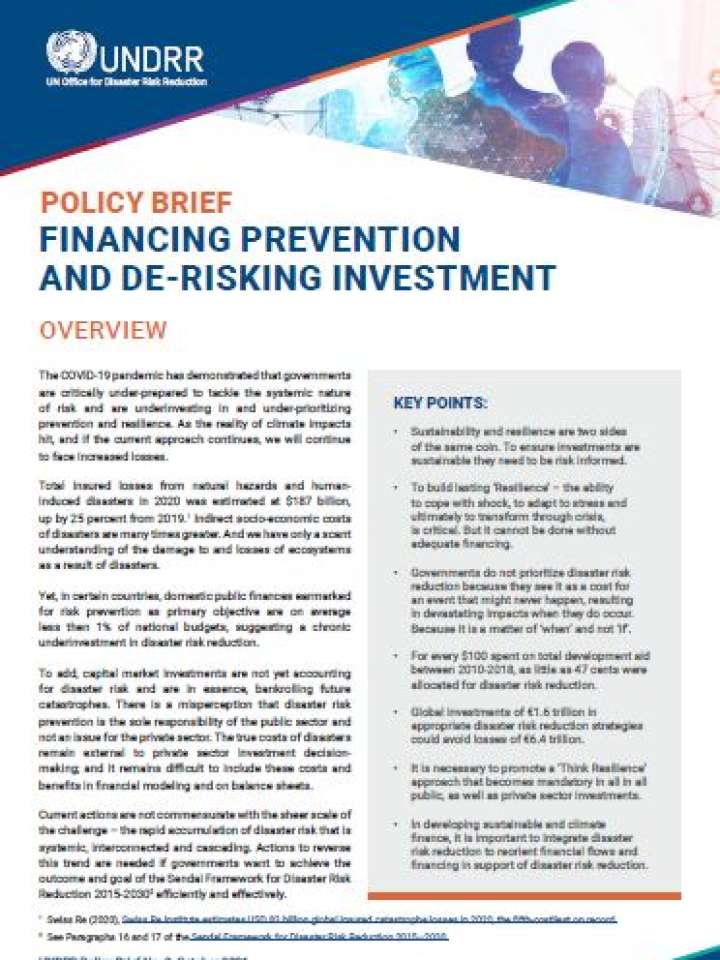Policy brief: Accelerating financing and de-risking investment
This policy brief explores the challenges faced in financing disaster prevention and de-risking investment. Total insured losses from natural hazards and human-induced disasters in 2020 was estimated at $187 billion, up by 25 percent from 2019. Indirect socio-economic costs of disasters are many times greater. And we have only a scant understanding of the damage to and losses of ecosystems as a result of disasters.
Yet, in certain countries, domestic public finances earmarked for risk prevention as primary objective are on average less than 1% of national budgets, suggesting a chronic underinvestment in disaster risk reduction. Actions to reverse this trend are needed if governments want to achieve the outcome and goal of the Sendai Framework for Disaster Risk Reduction 2015-2030 efficiently and effectively.
The brief provides the following policy recommendations:
- A shift from short-term outlook and under-prioritizing disaster risks to promoting a ‘Think Resilience’ approach that becomes mandatory in all public, as well as private sector investments;
- Mainstreaming of disaster risk into public and private investment;
- Ensure financial institutions and banks align their strategies, operations and activities with the Sendai Framework;
- Creating an enabling environment for effective insurance;
- Tracking prevention financing;
- Conducting risk-sensitive budget reviews;
- Increasing use and application of risk and financial data;
- Promoting blended financing and introducing prevention in bonds;
- Establish a pipeline for disaster and climate resilient infrastructure investment;
- COVID-19 stimulus packages that build resilience.
